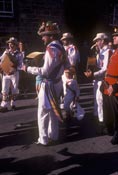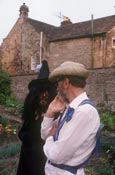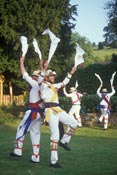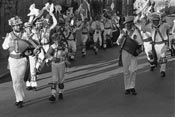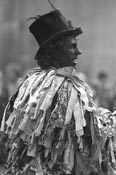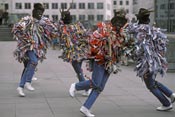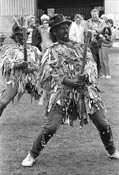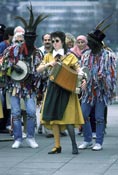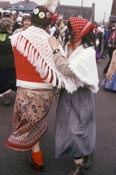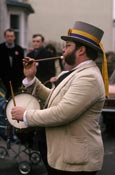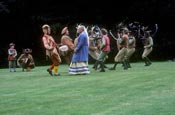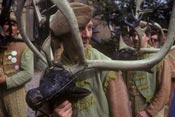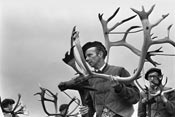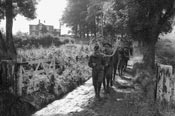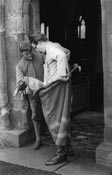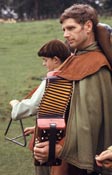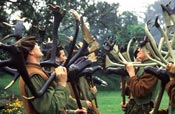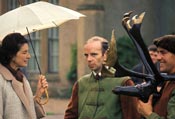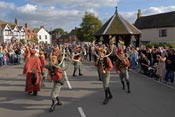
Winster Morris Dancers appear to be the only ‘Derbyshire Morris’ team dancing at present, a popular and colourful part of Winster Wakes towards the end of June. The style is like a cross between Cotswold morris to the south and NW morris to the north. It is more flamboyant than standard Cotswold, with huge handkerchiefs, in whites but with individually chosen bright sashes, rosettes and other decorations, flowers in their hats, a basic team of 16 dancers, four ‘characters’ and several musicians. The North West aspect is in their processional dance, very impressive with a full team and spares.
Border Morris dancing comes from the English counties of Shropshire, Herefordshire and Worcestershire. It is well documented that there was a distinctive morris tradition in this area but it had died out by 1900. It was ‘revived’ about 1970 by morris enthusiasts who wanted to add something unusual to their repertoire and has become extremely popular since, both with dancers and audience. It is rumbustuous, colourful and not too technically demanding. Molly Dancing from East Anglia, ‘revived’ about the same time, could be described in much the same way, but in drag. Some teams have the whole lot dressed up as man/woman characters, all have at least one. There is a theory that the name refers to ‘molly’ which was slang for an effeminate (gay) man a hundred or more years ago. It is in the Oxford Dictionary. Evidently they had clubs where they dressed up and danced together, just as gays do today. It is an attractive idea but Collections finds it difficult to relate gay capers of any era to butch molly dancers. Indeed Collections remains sceptical about both these styles of dancing suspecting that, even if we accept something did exist before 1900, ‘revivalists’ since the 1970s simply invented what we see today - though nothing wrong with that, of course. Still, there seems to be something essentially un-English about them, dash it...
Abbots Bromley Horn Dance is another matter altogether. Generally accepted as England’s oldest ritual dance, records go back to 1532 and speculation far into the fabled ‘mists of antiquity’. The reindeer horns they carry have been carbon dated to the 11th century, though that may not mean anything in relation to the age of the dance, especially since reindeer were long since extinct in Britain. They must have been imported from northern Europe. The dance may have something to do with deer hunting in the nearby Needwood Forest. It is very simple, indeed so simple that publicans, police constables, honoured spectators and the like are frequently invited, and can easily, take part. It’s not so much a morris dance, more a morris walk. There are six dancers, who carry the horns, a hobby horse, Maid Marion, Fool, a musician and two juniors with a triangle and a bow-and-arrow, most of whom are connected to the Fowell family who have been ‘carrying’ the custom since 1914. Sometimes female Fowells take part, to tut-tutting from purists. The whole tradition would be decidedly medieval if it wasn’t for the hundreds of folkies who turn up to watch them every September.

